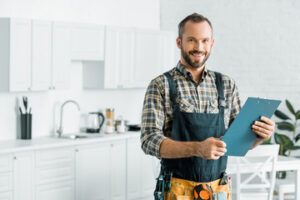Formazione Aziendale is a structured learning experience organized within a company or organization. Its purpose is to develop specific skills, increase team collaboration, or address certain challenges within the company.

The topics covered in these workshops can vary widely, but they all focus on improving the overall performance of individuals or groups in a business environment. Corporate workshops are often seen as a valuable tool for professional development, employee engagement, and fostering a culture of continuous learning.
The importance of corporate workshops cannot be overstated. In the modern business world, where change is constant, organizations need to equip their employees with the necessary skills and knowledge to adapt. Workshops can help individuals enhance their technical expertise, communication skills, leadership abilities, and problem-solving capacities. These events are designed to give employees hands-on experience, enabling them to practice real-world applications of what they have learned.
One of the main goals of a corporate workshop is to address specific business needs or challenges. For example, if an organization is facing issues with team collaboration or communication, a workshop focused on team-building exercises and effective communication strategies can be organized. Similarly, if a company is undergoing a technological transformation, a workshop may be designed to help employees adapt to new software or tools. Corporate workshops can also be used to foster a sense of innovation within the organization, encouraging employees to think creatively and develop new solutions to existing problems.
Workshops are typically led by experts or facilitators who have deep knowledge in the topic being covered. These facilitators often use a variety of methods to engage participants, including lectures, group discussions, hands-on activities, role-playing, and case studies. By incorporating multiple learning methods, corporate workshops can cater to different learning styles, ensuring that all employees have the opportunity to benefit from the experience.
One of the key benefits of corporate workshops is their ability to enhance teamwork and collaboration. In many cases, employees from different departments or teams come together in a workshop setting. This provides a unique opportunity for individuals to interact with colleagues they may not normally work with on a daily basis. Collaborative exercises during workshops allow participants to build relationships, share knowledge, and learn from each other’s experiences. This can lead to improved communication and cooperation back in the workplace, ultimately boosting overall productivity.
Moreover, corporate workshops are an excellent opportunity for employees to step outside of their regular routine and focus on personal and professional growth. The structured environment of a workshop allows participants to be fully immersed in the learning process, without the distractions of day-to-day responsibilities. Employees can gain new insights, refine their skills, and return to their work with a fresh perspective. This can have a positive impact not only on individual performance but also on the company’s overall success.
It is also important to note that corporate workshops are a powerful tool for leadership development. Many workshops are specifically designed for managers and leaders within the organization. These sessions often focus on topics such as decision-making, conflict resolution, team motivation, and strategic thinking. By improving leadership skills, these workshops help create a stronger leadership pipeline within the company, ensuring that the organization has a capable team of leaders ready to guide the company into the future.
Another significant advantage of corporate workshops is their potential to drive employee engagement. When employees feel invested in their own development, they are more likely to stay motivated and committed to their work. Workshops that offer valuable learning experiences can make employees feel that their employer is genuinely interested in their growth. This sense of investment can lead to higher job satisfaction, greater loyalty to the company, and increased employee retention rates.
While the immediate benefits of a corporate workshop are clear, the long-term impact can be just as significant. Workshops often spark a culture of continuous improvement within an organization. Employees who have participated in workshops may be more inclined to seek out additional learning opportunities on their own, whether through additional workshops, online courses, or self-directed study. This creates an environment where employees are always striving to enhance their skills and contribute to the company’s success.
However, it is essential for organizations to carefully plan and tailor workshops to meet their specific needs. A generic workshop that does not address the particular challenges or goals of the company will likely fall short of achieving the desired outcomes. To ensure success, organizations should assess the skills gap or areas of improvement they wish to target before organizing a workshop. This can be done through surveys, performance reviews, or direct feedback from employees. By aligning the workshop with the company’s needs, the organization can ensure that the workshop provides value to both the employees and the business as a whole.
Moreover, the effectiveness of a corporate workshop depends largely on the engagement and participation of the attendees. It is crucial for facilitators to create an interactive and engaging environment where participants feel comfortable sharing their thoughts and experiences. Encouraging active participation can help ensure that the learning process is effective and that employees are able to retain and apply the knowledge they gain. When participants are actively involved in the workshop, they are more likely to see its value and return to their work with a sense of purpose and enthusiasm.
In some cases, companies may opt for external facilitators or workshop providers to conduct the training. These external experts often bring fresh perspectives and specialized knowledge to the table, which can be valuable when addressing complex or niche topics. Working with external facilitators can also provide employees with exposure to new teaching styles and methodologies. However, it is important for organizations to carefully vet any external providers to ensure that they are a good fit for the company’s culture and objectives.
Corporate workshops are not limited to just in-person events. With the rise of digital communication tools, virtual workshops have become increasingly popular. These online workshops offer the same benefits as traditional in-person events, but they can be more flexible and accessible for employees, especially in remote or distributed teams. Virtual workshops allow employees to participate from anywhere in the world, saving on travel costs and time. In addition, virtual workshops can be recorded, providing employees with the opportunity to revisit the material at a later time.
While the digital format of workshops presents some challenges, such as maintaining engagement and fostering interaction among participants, it also opens up new opportunities. For instance, virtual workshops often incorporate interactive elements such as live polls, Q&A sessions, and breakout rooms. These tools can help facilitate collaboration and ensure that employees remain engaged throughout the session. As technology continues to evolve, it is likely that corporate workshops will continue to adapt and incorporate more innovative tools and techniques to enhance the learning experience.
To measure the effectiveness of a corporate workshop, organizations often seek feedback from participants. This feedback can provide valuable insights into what worked well and what could be improved for future workshops. Surveys, interviews, or informal discussions are common ways to gather feedback. Analyzing this feedback helps organizations refine their approach and continuously improve the quality of their workshops. Additionally, tracking the performance of employees after a workshop, such as changes in productivity, engagement, or skill development, can help measure the long-term impact of the workshop on the organization.
In conclusion, corporate workshops are an essential tool for organizations looking to develop their employees, foster a culture of collaboration, and address specific business challenges. They provide employees with opportunities to grow both personally and professionally, contributing to the overall success of the company. Through careful planning, active engagement, and continuous improvement, corporate workshops can create a lasting impact on an organization’s performance and culture. As businesses continue to evolve, corporate workshops will remain a vital component of the learning and development landscape, helping employees stay competitive, adaptable, and innovative in a rapidly changing world.

